- Author: Alejandro Del Pozo-Valdivia
I have been receiving phone calls about the presence of “red aphids” in organic romaine lettuce that is resistant to the lettuce aphid, Nasonovia ribis-nigri (Hemiptera: Aphididae, Fig. 1). The lettuce aphid is considered a difficult pest to manage. This aphid can be green as well as red, and will be usually found in large colonies inside the heart of the lettuce head. Being inside the lettuce head protects these aphids from predators and parasitoids; and their presence is considered a contaminant when heads are harvested.
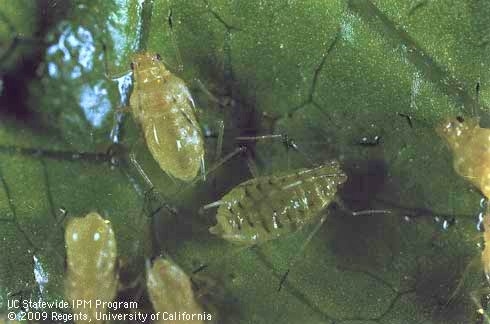
However, none of the samples that were submitted to the UC Cooperative Extension diagnostic laboratory were identified as the lettuce aphid. What are those “red aphids”?
First of all, aphids could have different color morphs within the same species. Therefore, relying only on color to identify aphids is not the ideal character to tell apart these pest species.
Submitted “red” aphid samples were identified as either: 1) the potato aphid, Macrosiphum euphorbiae, and 2) the foxglove aphid, Aulacorthum solani. Potato aphid has both the green and the red color morphs (Fig. 2). On the other hand, the foxglove aphid is usually green (Fig. 3); but infections of a naturally occurring Entomophthora fungus will make the specimens look like reddish. This sort of red coloration is due to the sporulation of the fungus from the dead aphid stuck on the leaves (Fig. 4).
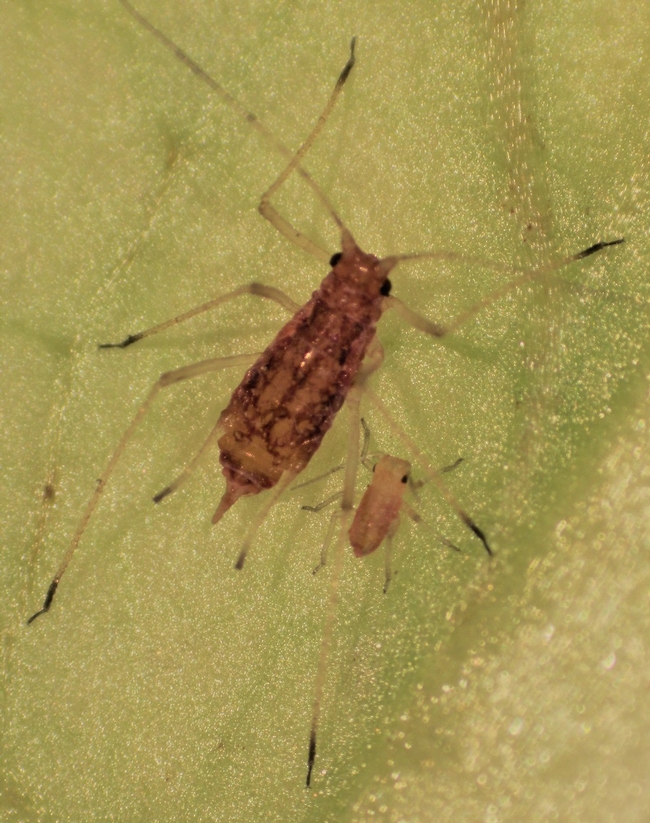
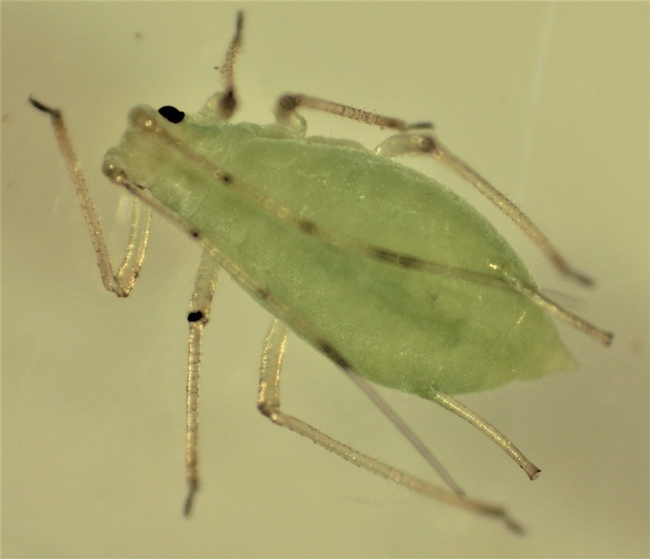
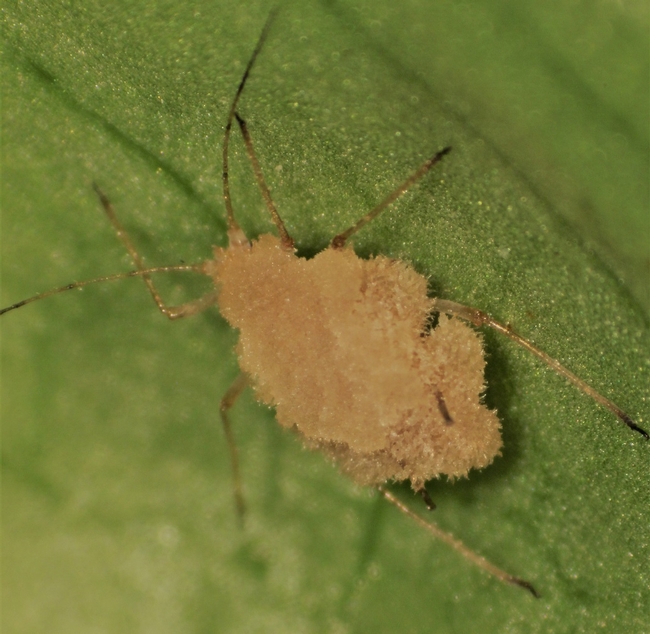
If you are managing organic lettuce with resistance to the lettuce aphid and you find red aphids, it is important to consider other features beside color. Additional information on how to identify aphid species infesting lettuce can be found at http://ipm.ucanr.edu/PMG/selectnewpest.lettuce.html. If you would like to have a second opinion on your identification, you can always call and/or send your sample to the UC Cooperative Extension office in Salinas.
- Author: Jian Long Bi
Leafminers (Liriomyza spp.) are important insect pests of lettuce. Major leafminer species in the Coastal lettuce is Liriomiza langei. Adult leafminers are small flies with yellow triangular spots between wings (Fig. 1). These flies lay eggs inside lettuce leaves. Leafminer adult flies puncture leaves to suck up plant sap, causing holes or bumps on the leaves, while the hatched larvae (maggots) feed inside leaves causing tunnels (mines). Feeding damage caused adults and larvae provide entrances of disease organisms and can render the lettuce unmarketable.
Chemical control is an important component in the integrated management of leafminers. Due to the emergence of insecticide resistance, introduction of novel insecticides with distinct modes of action into the current system for control of leafminers is urgently needed. We recently started a project to evaluate novel insecticides and their mixtures with other insecticides against leafminers in lettuce (Fig. 2). These include cyazypyr (a novel chemistry that has not been registered in lettuce), Coragen, Durivo (a pre-mixture of active ingredients from Platinum and Coragen), Voliam Xpress (a pre-mixture of active ingredients from Warrior and Coragen). Trigard and Agri-mek were applied as comparisons. Broader spectrum of insect pest control is expected from these mixtures. We expect to finish this trial in late August.
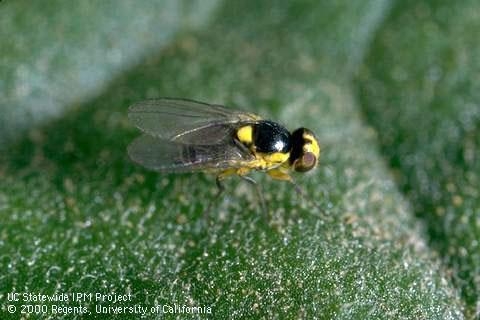
Fig. 1. Adult leafminers are small flies with yellow triangular spots between wings.
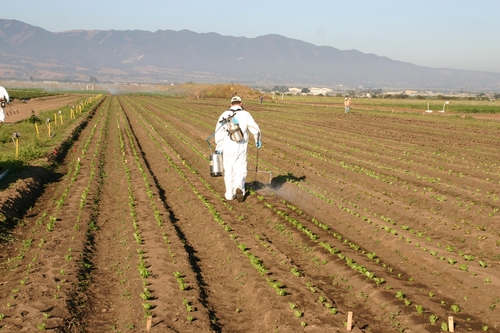
Fig 2. We recently started a project to evaluate novel insecticides and their mixtures with other insecticides against leafminers in lettuce.


